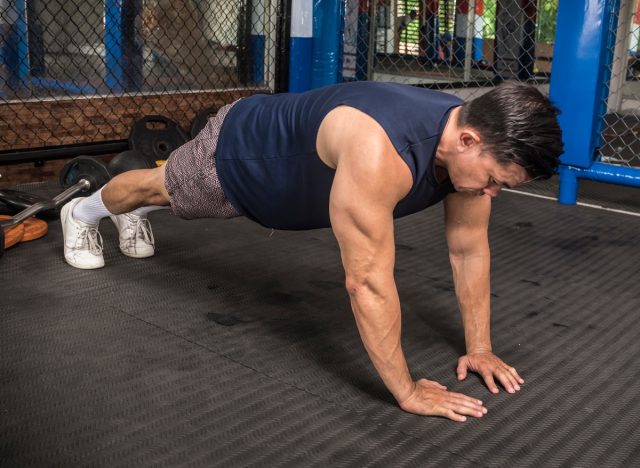4 Morning Exercises That Boost Energy Better Than Coffee After 50

Many people rely on coffee for a quick energy boost, but that burst often comes with a price: an afternoon crash, digestive discomfort, and jittery nerves. The good news is there’s a better way to energize your mornings, especially after 50.
These four morning exercises will increase oxygen and nutrient delivery to the brain while stimulating myofascial gliding to improve tissue hydration. Further, these exercises will stimulate your neurotransmitters, such as endorphins and dopamine giving you that same buzzed feeling you get from coffee. But unlike coffee, these will actually last throughout the day. Lastly, these exercises can actually help regulate your circadian rhythm, making it easier to fall asleep at night. When you get a good night’s sleep, you may see your desire for coffee drastically drop the next morning. As a wellness coach at Pierce Family Wellness, I’ve seen these exercises transform my clients’ energy levels naturally. Read on to discover the four morning exercises that will do the same for you.
Push-Up Matrix

This dynamic variation of the push-up activates large fascial chains (anterior and spiral), pumps venous blood from the arms and thoracic area, and stimulates intercostal muscles that influence breathing. All of this allows for a large amount of blood to be driven up the carotid arteries and into the brain. This allows for maximum oxygenation and nutrient delivery to the brain, providing the same alertness as coffee.
How to perform the push-up matrix:
- Begin either on your toes or on your knees in a push-up position
- Make a diamond shape out of your hands and place them slightly above your collarbone
- Perform 3 to 5 push-ups from that position
- Walk your hands so they are about shoulder width apart, still above your collarbone
- Perform 3 to 5 push-ups
- Take your hands as wide as you can, turning your fingers away from each other, still above your collarbone
- Perform 3 to 5 push-ups
- Repeat the series with your hands below your collarbone
- Repeat one last time with your hands parallel to your collarbone
- Complete 1 to 2 sets of the complete matrix
Common mistakes to avoid:
- Letting your back arch excessively
- Reaching your head towards the floor
- Focus on all the movement coming from the wrist, elbow and shoulders—no movement at the core or head
This exercise can be a bit complex at first, so please check out the accompanying video to get the technique: https://youtube.com/shorts/sTPgJmrLfRE?si=z81yPakQPGWLLynz
Boxing Footwork
Boxing footwork mimics cross-crawl brain stimulation. By stimulating the brain in this manner, not only do you increase blood flow to the brain, but you integrate the right and left half of your brain. Boxing footwork also increases cardiac output leading to endorphin release giving you that coffee buzz.
How to perform boxing footwork:
- Stand with your feet straight ahead, a little less than shoulder width apart
- Make a gentle jump while spreading your feet apart and rotating your hips about 45° in one direction
- Make a small hop and return to the beginning position
- Create the same small hop and again open your hips out to a 45° angle in the other direction
- Repeat this motion over and over until you’ve completed 45 seconds
- Rest for 10 seconds
- Repeat until you’ve completed four sets
Common mistakes to avoid:
- Trying to go too fast before you have mastered the basic footwork
- Trying to do too many sets before you’ve built up a tolerance
- Allowing the head to rotate—the head should be looking forward at all times
Piston Breathing
This breath technique expands rib cage mobility, massages the internal organs, and hydrates fascia surrounding the lungs and diaphragm. It stimulates the phrenic nerve (this nerve stimulates the diaphragm) and supports oxygen-rich circulation. Piston breathing is a great way to stimulate your sympathetic nervous system. This branch of the nervous system is the fight part of the fight or flight system. Between the stimulation of the nervous system and the increase in breathing rate, you will no doubt feel more awake and alert after this exercise.
How to perform piston breathing:
- Begin in a seated or kneeling position
- Take a big breath in through your nose and let your belly get as big as possible
- Sharply contract your abdominals by pulling your belly button rapidly towards your spine, forcing an exhale
- Repeat this movement as many times as you can before taking another inhale
- Beginners may only get 5 to 7 exhales in per inhale
- As you become more advanced, you should have no problem getting at least 50 exhalations per inhale
Common mistakes to avoid:
- Breathing in through your mouth
- Not fully contracting your abdominals
- Sitting with poor posture
T8/T9 ELDOA
The ELDOA decompresses the vertebrae, hydrates and nourishes the disc while resetting spinal alignment. This is the perfect exercise for correcting poor sitting posture. Further, the ELDOA exercises can help stimulate your cerebral spinal fluid flow. This is the movement of fluid in and out of the brain and is essential for cognitive function and alertness.
How to perform the T8/T9 ELDOA:
- Sit on the floor with your knees bent and your hands on your shins
- Sit up as tall as you can
- Gently tuck your chin while pushing your head straight back
- Maintaining your straight spine, reach both of your arms directly out in front of you
- Spread your fingers, bend your wrists back, and turn your entire arms open (your arms should look like Spider-Man shooting a web)
- Slowly raise your arms up over your head and try to reach up to the ceiling
- You should feel your shoulder blades reach up towards your ears
- Be sure to keep your jaw relaxed, your eyes looking down towards the floor, and breathe from your belly
Common mistakes to avoid:
- Holding your breath
- Looking up with your eyes
- Not reaching your shoulder blades up to your ears
- Clenching your jaw
How Often Should You Do These Exercises?
I encourage my clients to do these exercises daily in their morning routine as a way to replace or reduce caffeine intake. Of course, if you are sore, it is beneficial to give the sore muscle groups a day or two of rest. Generally, you should be able to do the piston breathing and the T8/T9 ELDOA daily. The push-up matrix and boxing footwork may take a day or two of rest in between until you have built up a tolerance.
You should notice an instant boost of energy with all of these exercises. If you don’t have the time or energy to do all of the exercises, simply pick a different one for each day as they all are designed for a quick energy boost that lasts.